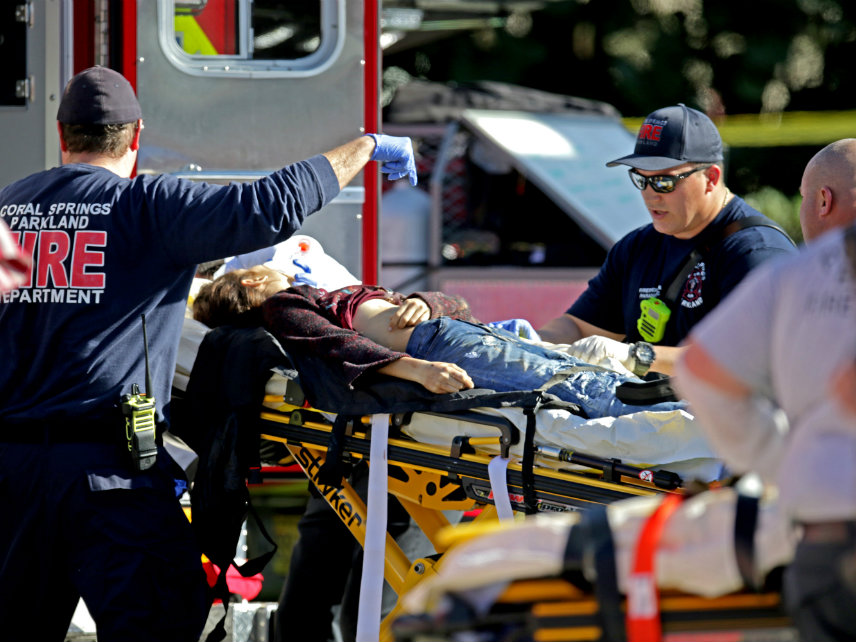No, There Haven't Been 18 School Shootings This Year
It trivializes a brutal crime to inflate the count this way. Cut it out.

The horrific shooting that left 17 dead at a Florida high school this week was not, in fact, the 18th such incident this year.
Wait—you might be thinking—I've seen that number reported everywhere in the past two days. On news broadcasts, on social media, in official statements from senators and mayors (and celebrities). At this moment it is literally the first Google News result for the number "18."
Indeed, that statistic has been everywhere. It is also, as The Washington Post reported Thursday evening, "flat wrong." Unless your definition of "school shooting" is broad enough to include suicides in school parking lots or accidental gun discharges that didn't harm anyone.
Everytown for Gun Safety, the Michael Bloomberg–backed anti-gun group founded after the 2012 school shooting in Newtown, Connecticut, was the original source for that particular statistic. The group's initial tweet claiming that the attack at Marjory Stoneman Douglas High School was the 18th school shooting in 2018 has now been retweeted more than 1,200 times. The group defines a school shooting is "any time a firearm discharges a live round inside a school building or on a school campus or grounds."
That is, of course, not what almost anyone means when they use the term "school shooting." It is foolish to group the Florida massacre with, say, a suicide in the parking lot of a Michigan school, especially when the Michigan school had been closed for months, but that's exactly what Everytown does. It's foolish, that is, unless your goal is to shock people with the biggest number possible. That might be what Everytown is trying to do, but such deception does nothing to help advance a discussion about stopping actual school shootings.
A quick review of Everytown's database turns up other outlandish examples. On January 10, "gunshots, which most likely originated off-campus, hit a window of the visual arts building at California State University, San Bernardino. Classes were immediately canceled as the university went into lockdown, though a police search failed to turn up any shooter on campus." On February 5, in a suburb of Minneapolis, "a school liaison officer was sitting on a bench talking with some students when a third-grader pressed the trigger on the officer's holstered weapon, causing it to fire and strike the floor." Those were no doubt terrifying incidents for the people involved, and they may even have policy implications, but they are not what anyone thinks of when they hear the phrase "school shootings."
But the media and several prominent politicians, such as Sen. Bernie Sanders (I-Vt.), eagerly regurgitated the context-free statistic in the aftermath of the shooting in Florida, apparently without stopping to wonder why they hadn't heard about the other 17 school shootings that supposedly had happened since January 1.
This isn't just an embarrassing case of confirmation bias. Spreading such misleading statistics affects how Americans—from ordinary working people to elected officials—understand and cope with these terrible incidents. It's similar to when Donald Trump falsely claimed that the American murder rate was at a 45-year high: Inflating the stats like that may have been politically expedient for Trump, but it didn't make it any easier to talk about how to craft policies to help those corners of America that really were seeing unusually high crime rates.
The media have a difficult, often thankless, task in the wake of high-profile crimes. Mistakes are bound to happen, and details are understandably difficult to come by in the first hours after a tragic incident. That's a reason to be more skeptical about seemingly shocking statistics, not less.


Show Comments (179)